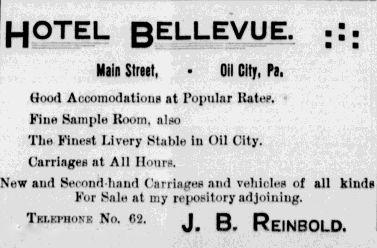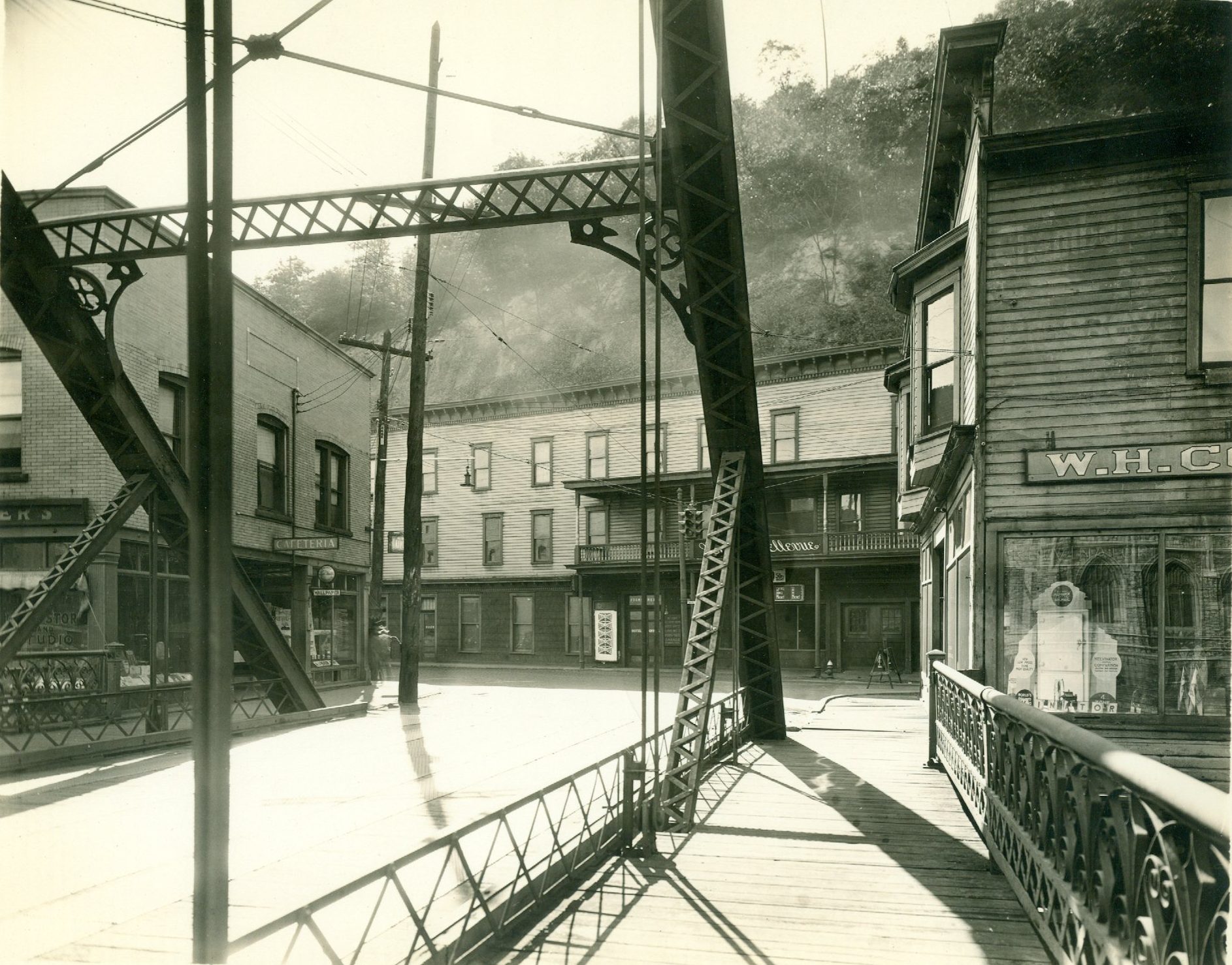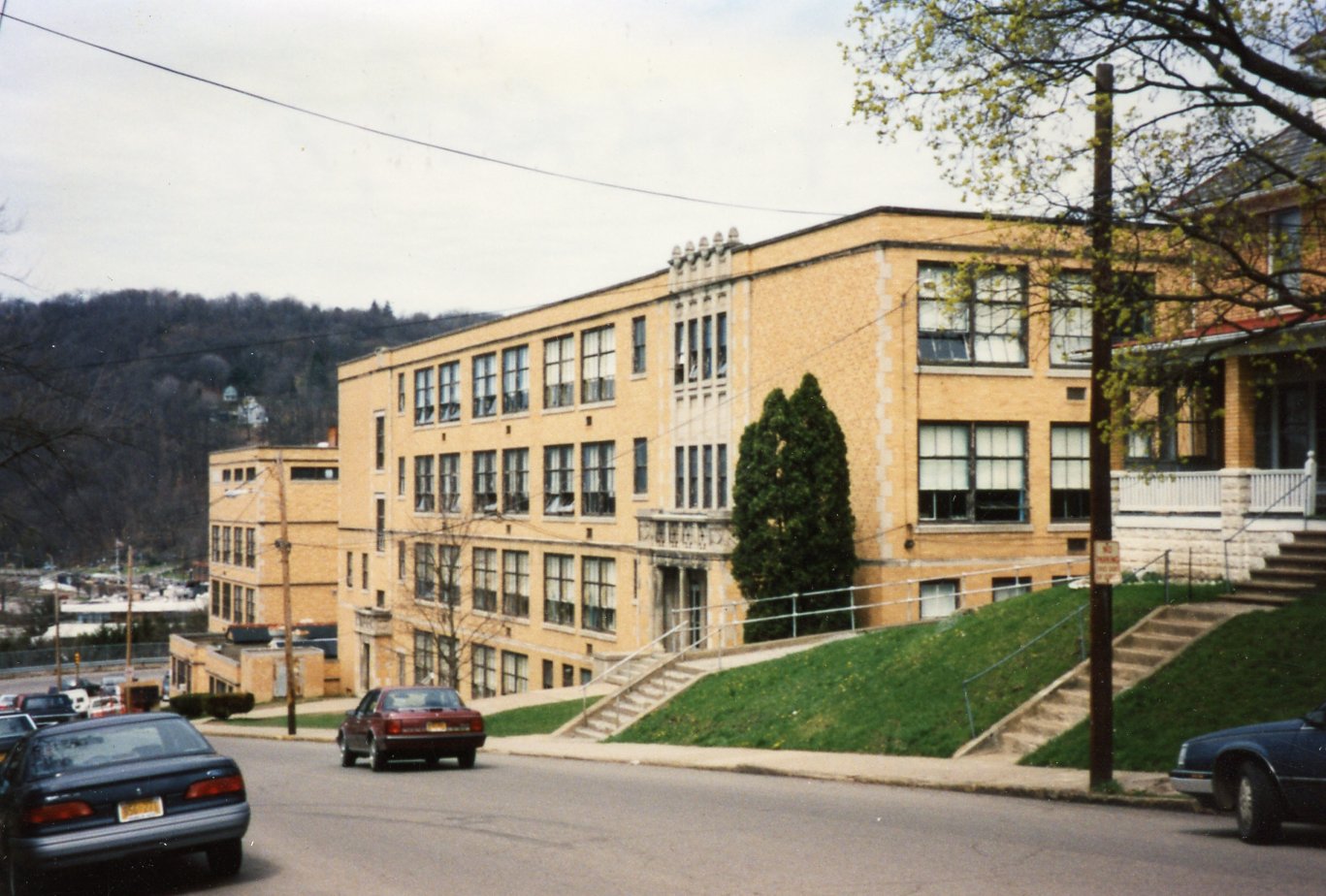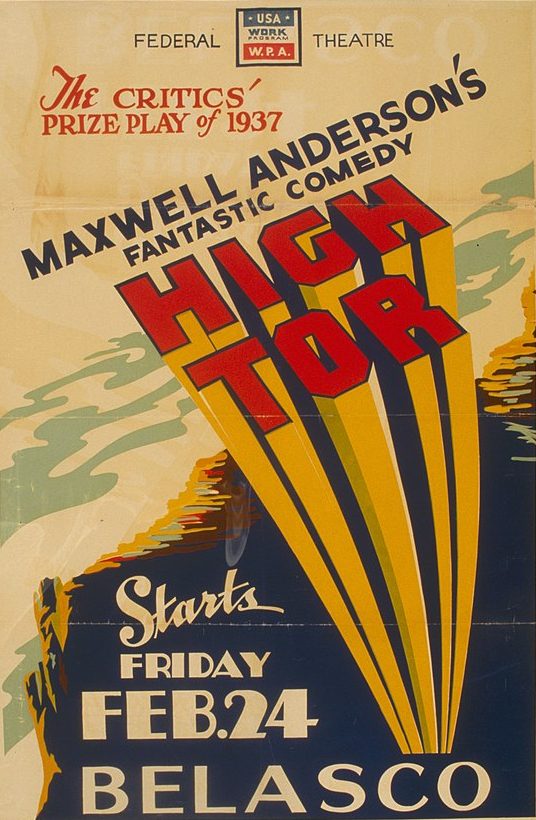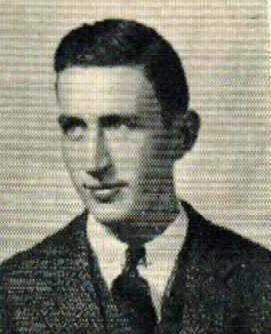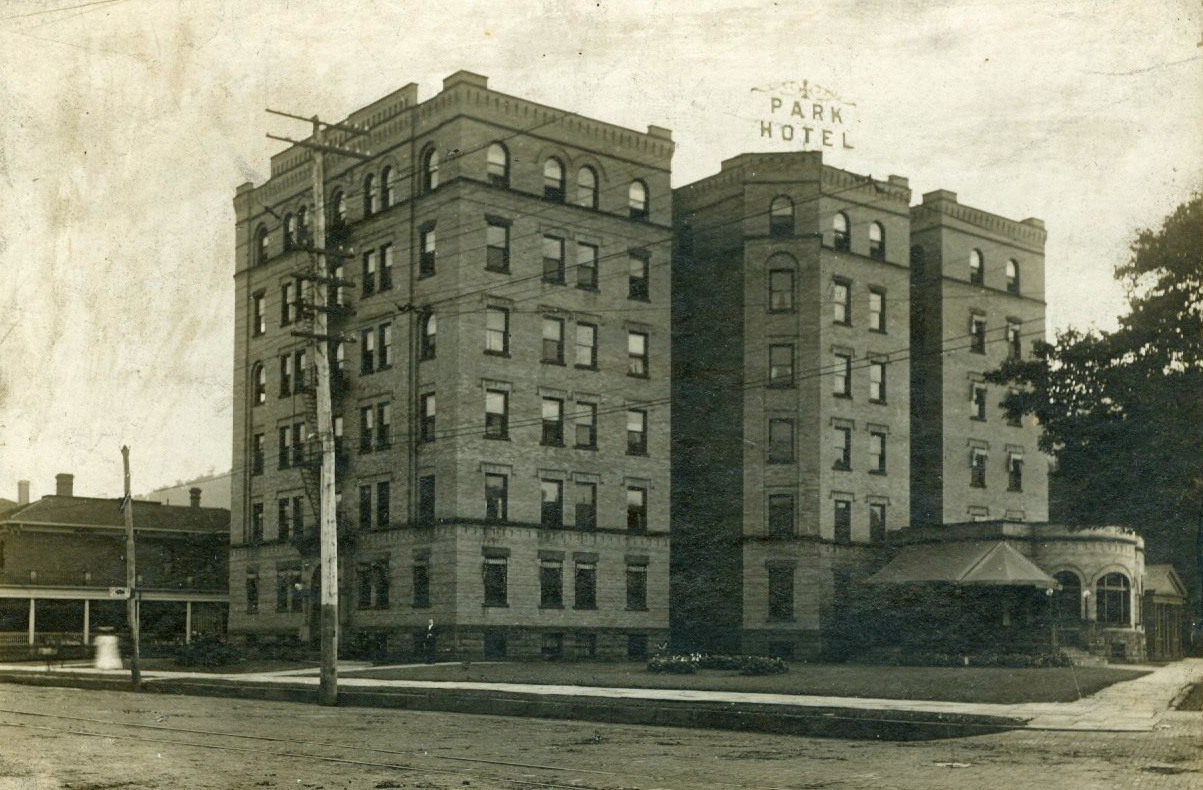Believe It or Not
- Judy Etzel
- January 7, 2022
- Hidden Heritage
- 5376
Tucked into the heritage of Oil City are little nuggets of quirky history.
Here’s a sampling of those ‘Did You Know?‘ entries:
Did You Know? Oil City has at least two entries in Ripley’s “Believe It Or Not” series. Main Street boasted the Hotel Bellevue, located directly across from the Center Street Bridge. It was built against a hillside and was only one-room deep. The hotel boasted it offered only front room views of the nearby Allegheny River and catered to transient customers by offering first class rooms. It was one of 14 hotels operating within the city.
J. B. Reinbold was the hotel manager. When the fire and flood on June 5, 1892 threatened the hotel and livery stable, he was able to save his five children and wife from the building, according to information in volume 2 of the Grove Hill Cemetery walk booklet. Reinbold, though, died in the fire when he went back to see about the horses in the stable. He was married to Mary Saltzmann, daughter of brewer John Jacob Saltzmann.
The former Oil City High School was the second Ripley’s entry. It was a large, two-section high school and one of the largest secondary education buildings in northwestern Pennsylvania with more than 1,500 students enrolled. Aside from its size, it held another distinction: it was the only building in the world to have four stories that all had exits to a ground level. That was because one side and the back were built right up to hills. The layout put it in Ripley’s “Believe It or Not” listing.
Did You Know? The McDonald’s fast food restaurant opened in downtown Oil City on Feb. 27, 1973. On that day, more than 5,000 sandwiches were sold at the new local eatery. While the sale numbers didn’t set a McDonald’s record, the crowd size did. A McDonald’s corporate official reported that in terms of people turning out on an opening day, “it was the largest ever in the chain’s history in the U.S.”
Did You Know? Maxwell Anderson lived in a number of small western Pennsylvania towns as his father, a Baptist preacher, moved from church to church. The communities included Cochranton and Townville. Anderson went on to become a nationally known playwright, lyricist, poet and screenplay writer and based some of his characters on people he had known in the small towns. Between 1923 and 1958, he wrote several plays, including “What Price Glory”, “Key Largo”, and the 1933 Pulitzer Prize winning “Both Your Houses.” He also wrote the screenplays for “The Robe,” “Death Takes a Holiday”, “All Quiet on the Western Front,” and “Vertigo.” He is buried in the cemetery at Cochranton.
Did You Know? Local newspapers carried a story on Dec. 8, 1941, one day after the Japanese attack on Pearl Harbor, Hawaii, about a local man who reportedly flashed the first alarm of the enemy attack. Sgt. Terry Kenney of Oil City, a wireless operator, sent out the alarm. Kenny, whose family lived on Colbert Avenue, wrote to his parents that he had wired the general alarm just seconds after the aerial attack. Kenney was serving with the 407th Signal Corps.
Did You Know? Sunday, Sept 24, 1950, was a date described as “the darkest day” in most of the northeastern U.S.
The Sept. 25, 1950, issue of The Derrick newspaper was headlined by “Sunday’s Daylight is Blacked Out Here by Canada Forest Fire Smoke.”
The smoke originated from smoldering fires in northern Alberta, spread as far south as Virginia. Thick layers of smoke covered most of the Northeast.
A photograph of Oil City’s Center Street taken on Sunday afternoon showed cars with their headlights on and hazy street lights. The downtown street, noted the reporter, was “black as midnight.”
“It began with a yellowish cast to the skies at about noon Sunday and, within an hour, the city was pitch dark from the smoke. Curiously, there was no smoky odor,” noted the paper. Reports from the countryside told of chickens roosting and roosters crowing during the darkness. An afternoon Pirates game in Pittsburgh was played under the lights.
The daytime darkness prompted scores of telephone calls to police and other agencies.
“The blackout came within a day and a half of the eclipse of the moon and at a time when war and atomic strength were on the lips of the local people,” wrote a Derrick reporter.
Did You Know? The wind chill measurement chart, used to describe how cold it feels when wind speed is factored into the air temperature, was created in 1939 by Paul Siple, an Allegheny College student who went on three trips with Admiral Richard Byrd to Antarctica. Siple, an Erie resident and freshman at Allegheny, was tapped by Bryd to accompany him on the first voyage because of his involvement in the Boy Scouts. He beat out 600,000 other Scouts for the honor and spent the next 18 months aboard Byrd’s ship and on the Antarctic continent.
He then returned to Allegheny, earned a degree and in 1933 joined Byrd for a second expedition. Byrd’s offer to Siple, who by then had earned a Ph.D. in geography, was repeated in 1939 in a trip officially known as the Antarctic Service Expedition. He was assigned to set up the base and handle logistics. During that time, Siple and fellow scientist Charles Passel created what would become known as the wind chill factor. He also designed cold weather gear and eventually held eight patents for cold weather attire.
After World War II, Siple worked for the U.S. Army’s Office of Research and Development. He was the cover story in the Dec. 31, 1956, issue of Time Magazine.
DID YOU KNOW?
The Park Hotel, formerly known as the Alsace Hotel, was at the corner of 12th and Liberty Streets in Franklin. It was built in 1902.
Franklin resident and historian Carolee Michener noted in her 1995 publication of “Franklin: a Place in History,” that Thomas Edison, his wife and two sons spent a night in the hotel in September 1907.
When Thomas Edison died several years later, his wife married Franklin native Edward E. Hughes.
Written by Judy Etzel with research by Kay Dawson and design by Natalie Cubbon.
HIDDEN HERITAGE IS SPONSORED BY:
Oil Region Alliance
Belles Lettres Club of Oil City
Gates & Burns Realty
Support This Project
Donations to the library are appreciated to help offset printing costs & make this project possible! Want to become a sponsor? Email us at promotions@oilregionlibraries.org to get started!
Make a Donation
